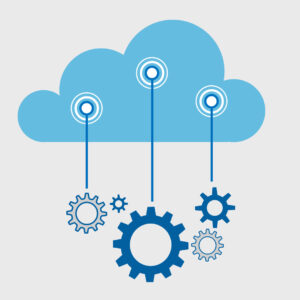Human resources education in today’s climate requires more flexible solutions than in the past. With a growing remote and cross-cultural workforce, rapidly changing technology, and the expectation for on-demand services, those stodgy, canned, in-person trainings of old are no longer going to pass muster. If you’re looking to foster more meaningful workplace education for your organization, there are plenty of resources to help.
Delivering great learning incomes can be achieved in a number of innovative ways such as cloud, learning-as-a-service, just-in-time, and blended learning solutions.
Cloud Solutions
While cloud services are rapidly becoming the norm, cloud learning solutions are still gaining footing, especially in corporate settings. But when it comes to supporting your needs around human  resources education, cloud learning solutions provide flexibility, convenient access, and simplified deployment to organizations in need.
resources education, cloud learning solutions provide flexibility, convenient access, and simplified deployment to organizations in need.
If your organization is still pondering whether a cloud learning solution is the best next step, consider these benefits:
Remote access – Cloud solutions allow employees to access content on demand from wherever they may be. This saves your organization time and money normally spent on travel and classroom training, while also providing enhanced opportunities for learning to a workforce that may be spread over a vast geographic region. Human resource teams can also ensure consistent educational experiences across their entire workforce.
Infrastructure – One of the most significant benefits of a cloud solution is that it allows an organization to focus on their strengths without worrying about in-house IT infrastructure. Equipment and software updates, content backup, and security are all handled by an outside team, leaving your staff free to specialize in your own niche areas.
Learning-as-a-Service
Learning-as-a-service (LaaS) solutions are subscription-based educational platforms and curriculum that are cloud hosted. These have all the benefits of other cloud learning options, while also providing some additional perks:
Updated Materials/Content – As any educator knows, it can be a challenge to keep learning materials current and fresh. In an HR environment, policies and procedures may be constantly shifting as laws and best-practices change. With learning-as-a-service packages, updates can be rolled out quickly and efficiently with minimal effort from your organization. Your team will always have access to the most up-to-date information without drawing resources to constantly edit training materials.

Experienced and Knowledgeable Training Teams – HR teams are often stretched thin when it comes to responsibilities. They may not always have the staffing to provide ongoing training, especially in more generalized areas. LaaS solutions remove this concern by providing educational content and tools that are current, engaging, and optimized.
Just-in-Time (JiT) Solutions
Whether or not you’ve heard the phrase “just-in-time learning,” you’re likely familiar with the concept. If you’ve ever quickly searched for an answer online or asked your co-worker for help, you have put just-in-time learning into action. A just-in-time solution is one that’s made available to you at the moment of need. It might be a short software video tutorial, a step-by-step handout, or an online chat with an expert. The most effective JiT solutions are brief, focused, and easily digested so that you can quickly absorb the information and move forward with your task. They are perfect for sharing quick, consistent, and essential information to a variety of employees, including a manager doing their first employee review, someone preparing for parental leave, or someone heading out on sabbatical.
There are a number of benefits to just-in-time solutions:
Engagement – Because the information is provided at the moment of need, it becomes more engaging and relevant for the learner. And since the lessons are short and focused, they are easy to digest.
Retention – The learner is receiving the information and immediately implementing it, which can strengthen retention. With shorter, more focused lessons, there is less chance they will be distracted during the learning process.
Productivity – Employees aren’t caught up waiting for answers and help. They can immediately receive the information they need to move forward. Moreover, if their retention is higher, there is less need for additional training and reinforcement.
Blended Learning Model
As a human resources professional, you know the importance of personal interactions and experiences. Blended learning combines online coursework with in-person activities to maximize flexibility, while still providing the person-to-person interaction that some training topics and trainees require. For many organizations, this hybrid solution allows for a perfect balance.
Personal Connections – When properly implemented, blended learning incorporates many of the great solutions mentioned above, while acknowledging that some educational opportunities are still best served live. Activities like role plays, discussions and debates, and one-on-one coaching, not only help with skill building, but in fostering camaraderie and a sense of connection to the organization.
General Knowledge vs. In-House Knowledge – Chances are, much of the knowledge that your employees need is general knowledge, such as how to use a particular piece of software or what their rights are around family leave. These are the sorts of topics that are easily farmed out via LaaS solutions or outside trainers. But your employees may also need in-house knowledge, such as specifics on your benefits package, hiring practices, and even company culture. These topics may be better suited for in-person educational opportunities or in-house-created cloud-based solutions.
Utilizing Digital Tools for Responsive Human Resources Education
You may still be wondering what this would actually look like in your work environment. How can you integrate these technologies into your human resources toolbox in meaningful ways? Here are some examples:
Create and support long-term mentoring and cohort groups – Bring people together for an intense workshop in person and then shift to activities utilizing online tools, like discussions in a cloud-based forum or video chat lunch dates, to continue conversations and relationship-building.
Educate around digital literacy – Some employees will struggle with shifts to remote offices or working with remote teams. Create a learning series to build competency with topics such as online meeting etiquette, communicating effectively without in-person visual and audio cues, and de-escalating misunderstandings online. Combine videos, research/statistics, and online role play situations to assist.
Design a human resources knowledge base – Gather answers to common questions and concerns and provide written and video responses that employees can access as needed.
Foster diversity – Create a blind hiring platform where uploaded resume information can be stripped of unnecessary information that may lead to bias, such as names, dates of degrees/employment, etc. Offer initial candidate testing/screening online with digital tools. Consider using chat or a questionnaire for early interviews.
One of the biggest strengths of responsive human resources education is that it can be tailored for your organization. As you consider next steps, take some time to break out what types of learning can be moved online and/or outsourced vs. what educational experiences and information are best shared by in-person training. This will help you piece together a perfectly customized solution for your unique needs.


